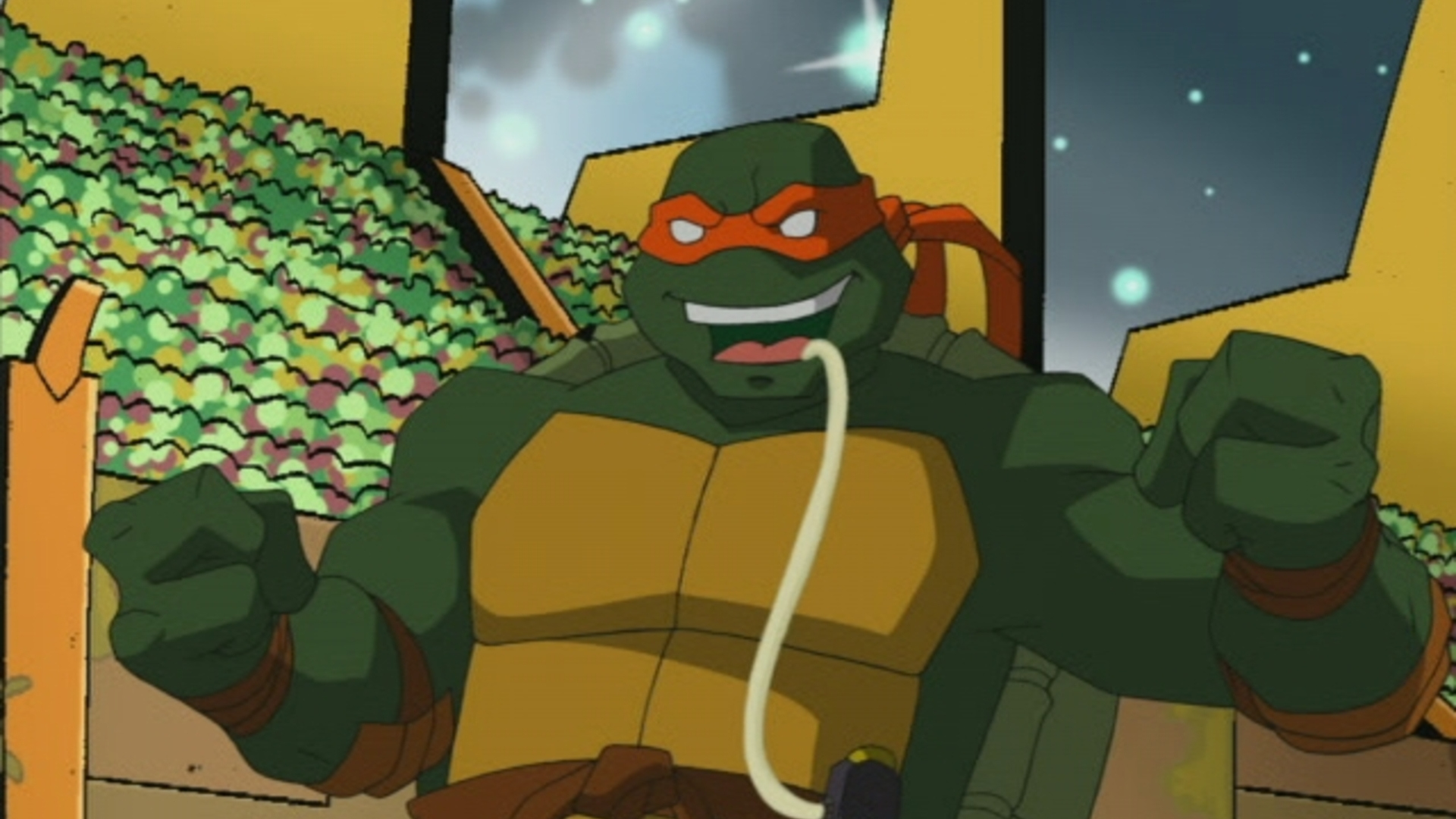
Boasting strangely mobile and expressive suits (courtesy of Jim Henson’s Creature Shop, at least in the first two movies), the movies were so toothless and kitschy that they quickly became marked by their unintentional humor, from the sight of baby Splinter practicing his ninja moves in a cage in the first film, to - in their most infamous, and definitively uncool, moment - the Turtles breakdancing along to Vanilla Ice’s “Ninja Rap” in the second. Whereas The Simpsons transcended its early Bart-centric phase by expanding into a sprawling work of multi-character satire and subversion, Teenage Mutant Ninja Turtles merely continued down its hokey path, most notably via three live-action feature films (1990’s original, 1991’s The Secret of the Ooze, and 1992’s largely unloved time-traveling III) that further solidified the Turtles’ infantile humor. No doubt, the immensely popular Teenage Mutant Ninja Turtles cartoon (which ran, in various weekday and Saturday-morning versions, until 1996) was aimed at the youngest set.

#Teenage mutant ninja turtles 2014 stream full
They preached wholesome values about togetherness and camaraderie with unabashed squareness, and the series’ action was always of a decidedly slapstick-y nature, full of skateboarding tricks and pratfalls that strove to be as groan-worthy as possible. They looked like doughy, oversize, weapon-wielding muppets, and they spoke in of-the-moment slang. That this incarnation betrayed the property’s origins was transparent - instead of a stark tongue-in-cheek homage to genre fiction, the Turtles were now hokey clowns. Before long, they were plastered all over clothing, lunch boxes, and every other conceivable product a child might covet. Hitting the small screen right before the emergence of Bart Simpson mania, which itself thrived courtesy of a marketing blitz built around the character’s fondness for impertinent exclamations fit for beach boardwalk T-shirts (“Eat my shorts!” “Don’t have a cow, man!”), the Turtles became an instant phenomenon. Gone was the spartan black-and-white imagery and the severe, violent tone now the Turtles were a cute, colorful, banter-heavy bunch of brothers with an insatiable hunger for pizza, a catchy credit-sequence theme song, and plentiful catchphrases (“Turtle Power!” and “Cowabunga!” being their signature cries). If the original TMNT was amusing (as far as it went, which wasn’t very), things irrevocably changed in 1987, when - thanks to a partnership between Eastman and Laird, and Playmates Toys - a five-episode animated miniseries debuted, and then in 1988 was followed by both an action-figure line and a full season of the show. Watch a Video About the Bizarre History of the Teenage Mutant Ninja Turtles A clever, fleetingly amusing goof for comics aficionados, sure, but a goof nonetheless. Toss in the fact that the series’ dour atmosphere is something like an exaggerated Ronin put-on, and it was apparent even to my young eyes that the Teenage Mutant Ninja Turtles comics were just a one-note anthropomorphic-animal goof.

Eastman and Laird’s maiden issue makes it plain that the Turtles have been slimed by the same goo that gave Marvel’s Daredevil his power - a cheeky allusion that’s furthered by the fact that, while Daredevil fights a shadowy cabal known as the Clan, the Turtles combat the evil Shredder’s gang, the Foot. Those initial issues used stylish black-and-white artwork to lend some samurai somberness to a tale of four pet turtles magically transformed by radioactive ooze into humanoid teenagers who are then trained in the sewers to become ninja warriors by a mutated sensei rat named Splinter. My first exposure to the Turtles came in 1986, at the age of ten, through Eastman and Laird’s comics. Because the Turtles are neither awesome nor gnarly nor radical. And with the birth of a fresh round of Turtle-mania courtesy of Michael Bay’s new reboot, out today, it’s one that needs to end.

Their story is one of unlikely triumph over their own fundamental lameness. The Turtles are a joke taken too far, first by the entertainment industry and then by consumers who wanted their action-comedy as gratingly juvenile and Archie Comics–style milquetoast as possible. The entire 30-year history of the Turtles is one gigantic misunderstanding between the property and the public at large, the latter of whom have embraced characters who were never supposed to be lovable, or funny, or even truly taken seriously. Moreover, they weren’t really meant to be. The Teenage Mutant Ninja Turtles are not cool, and haven’t been since creators Kevin Eastman and Peter Laird’s 1984 comic introduced them to the world.


 0 kommentar(er)
0 kommentar(er)
